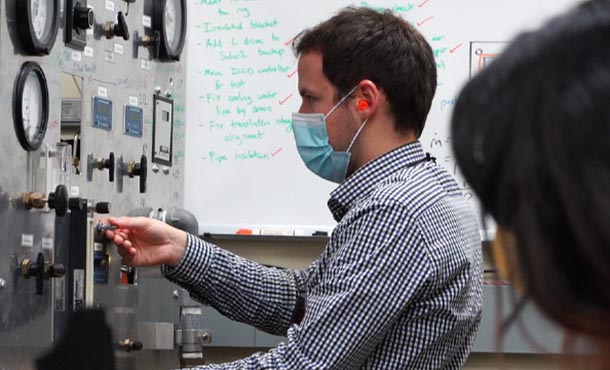
Despite a temporary reduction in energy use in 2020 due to the pandemic, Penn State engineers are warning to not treat this reduction as a long-term trend. They advocated for better communication strategies about energy use to help combat the effects of climate change. IMAGE: PENN STATE COLLEGE OF ENGINEERING
How we talk about energy
Letter from Penn State engineers highlights how better energy literacy can help combat climate change
1/28/2021
By Tim Schley
UNIVERSITY PARK, Pa. — Joules and kilowatt-hours and British thermal units, oh my!
Complex units for measurement, uneven accounting systems and regional energy dependencies all make it difficult to understand how energy is used around the world, according to researchers in Penn State’s College of Engineering. In a recently published letter in ACS Energy Letters, they advocated for new ways to facilitate a global conversation about energy consumption, including how much energy is being used, the fuel sources that generate electricity and how different parts of the world can reduce its carbon footprint.
Bruce Logan, Kappe Professor of Environmental Engineering and Evan Pugh University Professor; Jacqueline O’Connor, associate professor of mechanical engineering; and Wei Peng, assistant professor of international affairs and civil and environmental engineering, summarized key points from the letter below.
A common language for energy
Logan: One of the biggest roadblocks for addressing energy consumption is understanding how much energy you really use, but your house is in kilowatt-hours and your car is in gallons of gasoline. How do you add those up? One thing we advocate is looking at everything in what we call the daily energy unit, “D.” The 2,000 calories you eat every day is one daily energy unit. My house uses 10. A gallon of gasoline is 15. Suddenly, all of those units go away, and you can compare your car and your house and the food you eat.
Peng: In the Paris Agreement, countries made their own commitments to reduce carbon emissions, but right now, countries are reporting energy in different units. It makes it difficult to compare these commitments in the first place and to measure whether countries are actually on track to deliver those targets. A common unit for energy will make sure all the countries use the same metric in reporting energy use and measuring progress towards decarbonization.
Electricity produced from renewable energy should be counted differently than from fossil fuels
O’Connor: Certain renewables that don’t have fuel sources — such as solar, wind or hydro power — should be treated differently than power sources based on fossil fuels, like natural gas and coal. The thermodynamics of how you get from original energy to electricity are fundamentally different for all of them, but the way we do the accounting in the United States tries to put them on a level playing field.
Logan: The United States says that for every kilowatt-hour of electricity we have from solar energy, that we consume two kilowatt-hours of primary energy, but that’s not true. On paper, it might look like we consumed 39 exajoules of energy to make 14 exajoules of electricity, but we actually only used 35. We could see real changes in energy reduction, but if we back-calculate this other energy, it will look like we’re using just as much energy as we were 10 years ago.
Highlighting multiple pathways to global decarbonization
Peng: Different countries have different energy use patterns, and as a result, the politics of the energy sector varies substantially across countries. Who are the main interest groups? Who will be the likely winners or losers if the country transitions away from fossil fuels? In addition, different countries have different availability of renewable resources. A global perspective for decarbonization is critical because climate change is a global problem, but because of these cross-country differences, I don’t think there is a one-size-fits-all strategy. Localized solutions are needed.
O’Connor: When we turn a light switch on, we want the light to turn on, so having reliable energy is important. We also want it to be clean. That is where gas turbines can play an important role. They burn natural gas, which compared to coal has a significantly lower carbon impact. Right now, one of the world record holders for electricity generation from a gas turbine is 63.5% efficient, which is almost double what you are getting from coal. These machines are a good, flexible pathway as we think about decarbonizing the grid.
Gahyun Baek, Ruggero Rossi and Le Shi, all postdoctoral researchers in environmental engineering, also contributed to the letter.
The research was supported by the National Science Foundation and funding from Penn State.



